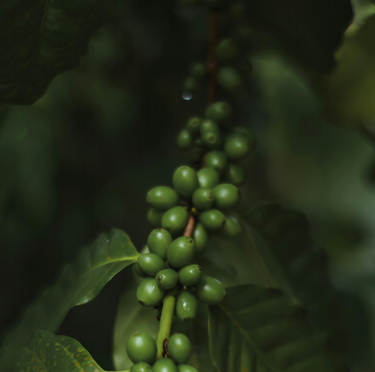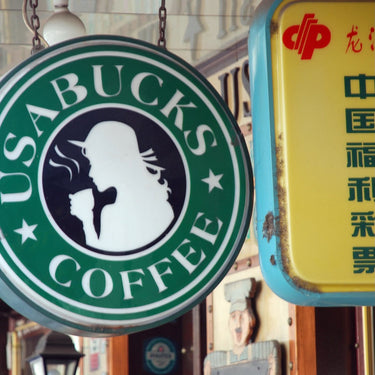At Rave Coffee, we’re all about celebrating the stories behind the coffee we roast for you. Honey processed coffee is probably something that most of you would have heard about but let’s make it clear from the off; it has nothing to do with Winnie the Pooh’s favourite snack…
What The Hell Even IS Honey Processed Coffee? 🍯
Before we jump into the history, let’s clarify what makes honey processed coffee different from the other two main processing methods out there; natural and washed.
Unlike washed coffees, where the fruit skin and pulp is removed using a pulper, then 'washed' with water to loosen the final mucilage layer, or natural coffees, where cherries are dried whole, honey processing sits in the middle. The best of both world’s approach creates a balance of the fruity and floral elements of a natural coffee and the balanced acidity of a washed coffee. But how does that happen, let me explain:
In honey processing the coffee cherry's pulp and skin are mechanically removed, leaving behind a thin layer of gooey mucilage. In natural processed coffee the whole of the fruit is left as is to dry…naturally whereas the washed process…washes the fruit until all that you are left with is the bean itself. Simple enough eh?
What makes honey processed coffee sit in the middle of these two is that it leaves the mucilage during the drying stage, while washing off the layers above the mucilage. The mucilage, a fruity coating on the seed, has a massive impact on how sweet your brewed cup of coffee will taste. During the drying stage, the fruity substance coats the bean and the sugars become more concentrated, and start to penetrate the coffee bean. This coating is sticky and sweet, much like… maple syrup 🤦♂️ sorry I meant honey.
The coffee beans are then turned until they are completely dry, at which point they are taken to a mill to be cleaned of any remaining mucilage ready for shipping to us for roasting.
Where It All Began
In 2008, a major earthquake caused extreme water shortages in coffee-growing regions in South America. This led to farmers in Costa Rica, who faced government imposed water restrictions, exploring different processing methods that required less water than the traditional washed process. The Chacon family of the Las Lajas mill designed a processing machine that only removed the outside layers leaving the mucilage exposed. Originally called the mucilage drying method, after some PR work it was renamed the honey process, unsurprisingly after that it started to gain traction.
Honey processing emerged as a practical and eco-friendly solution. By removing only the outer cherry skin and skipping the intensive water washing stage, farmers could save precious resources while still producing high-quality coffee. Over time, this method gained traction for its environmental benefits and the unique flavour profiles it offered. A win, win for everyone.
The Evolution of Honey Processing
Honey processing quickly spread across Central and South America, with coffee-producing countries like El Salvador and Nicaragua adopting and refining the technique. Farmers began experimenting with different levels of mucilage left on the beans, leading to the creation of distinct “honey” categories:
Yellow/White Honey: Around 25% layer of mucilage remains, giving a balanced sweetness and medium body. Left to dry for up to around 8 days.
Red Honey: Around 50% of the mucilage stays on the bean, leading to a fruitier and more complex profile. Left to dry for around 12 days.
Black Honey: Most of the mucilage is retained, and the beans are dried slowly under shade, creating a rich, syrupy sweetness. Left to dry for around 30 days.
Each variation requires incredible care during drying, as the beans are prone to fermentation and defects which would massively impact the quality and overall flavour.
How it Grew 🌱
What started as a necessity in Costa Rica rapidly became a global trend in specialty coffee, but unlike your favourite influencer this trend actually made the world better. The method’s ability -with the different categories of honey- to balance the bright, fruity notes of natural coffees with the clarity and clean finish of washed coffees made it a pretty quick overnight success with coffee lovers worldwide. It’s no surprise that honey-processed beans frequently win awards and regularly feature on the shelves of specialty coffee roasters, including here at Rave.
Why Don’t You See It Everywhere?
We are banging on about how great it is but why do we only have a few offerings processed this way? Well what makes it unique also makes it pretty easy to mess up so farmers don’t take the risk. You need to make sure that you leave the right amount of mucilage on, make sure to turn the drying parchment at the right times, etc. If you get it wrong you end up with a coffee that has none of the qualities that make honey processed popular.
The Final Sip ☕️
Honey-processed coffee may have come about out of necessity but in doing so it has become one the three established processes in coffee harvesting now, which is wild. If you are keen to try it out for yourself check out our Costa Rica Hermosa Honey Nº 274. With tasting notes of caramel, milk chocolate, and cranberry, it’s a proper tribute to the magic of honey processing and its Costa Rican beginnings.








Really quite interesting , am about to look to buy some and taste the coffee
Adam on
Really quite interesting , am about to look to buy some and taste the coffee
Adam on
Wow! Honey processed coffee sounds delicious. How I wish a decaf variety was possible as caffeine makes me feel lousy so it’s decaf all the way for me.
Claire on